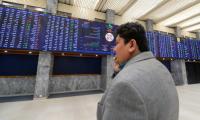The residents of Aleppo knew it was coming – they’d seen it before. From Madaya to Yarmouk, from Fua to Kefraya, the scenes and stories of Syria’s sieges have become synonymous with the savagery of the conflict. Siege-led starvation and barrel bombs are the iconic weapons of Syria’s civil war as we approach its fifth anniversary in mid-March.
If – or, seemingly, when – Aleppo is fully encircled, it would leave up to 300,000 people still residing in the city, cut off from humanitarian aid according to the United Nations. Aid operations outside of regime-controlled areas have been bedevilled by access and security challenges over the past five years. As the need has gotten larger, the practicality has become ever more impossible.
Aleppo, once Syria’s biggest city, would suddenly become both hostage and bargaining chip in negotiations over humanitarian access and opposition surrender or transfer.
International law abandoned Syria long ago, and the country instead has been replaced by the politics and justice of unbridled violence. Meanwhile, tens of thousands are gathering at the Turkish border in what has essentially become an unsafe ‘safe haven’.
Syria appears to be less and less about Syrians and instead a chessboard for a multiplicity of conflicts to play out simultaneously. The UN stopped counting the dead back in 2014, but others have preserved in chronicling the country’s tragedy, which has now accumulated to11.5 percent of the population killed or injured.
A visitor to the country before 2011 could have travelled to one of Syria’s magnificent castles – Krak des Chevaliers, Citadel of Salah Ed-Din or even the Citadel of Aleppo, and seen how these bastions of war and influence were always prepared for the attrition of siege warfare. Huge granaries, water tanks as big as lakes, salted meats and food stocks were designed to keep a population safe and secure and the enemies beyond the walls.
Today the Citadel of Aleppo is home to snipers who peer through slits once manned by archers. In the city below, civilians have no walls, and even if they did, they couldn’t do much to prevent barrel bombs or artillery smashing onto them from above.
In Syria’s medieval castles, we rely on historians to tell us what happened in the depths of the prisons; today, the UN has a far better picture. Indeed, an extremely grim report released this month documents prisoners who were forced to drink water from toilets, dying of starvation or frequent beatings, untreated infection leading to slow death, and those with chronic illnesses succumbing after being refused medicine.
Records shown to family members didn’t correspond with the official cause of death, most often presented as heart attacks, with a horrific condition of the body itself. The report surmised that everybody knows what’s happening in the prisons, just as everyone knows the consequence of a siege, and thus, bear a collective responsibility for the action described by the UN “in pursuance of a state policy, amount[ing] to extermination as a crime against humanity”.
The US-Russian ‘cessation of hostilities’ offer sounds good on paper; however, the stalled or suspended Geneva peace process has held ceasefire talk before. Few came to fruition, and others seemed like tactical pauses between offensives, rather than any genuine attempt to stop the killing.
Increasingly, we’re facing the prospect of a Syria without Syrians. Already, nearly 50 percent of the entire country has been forced from their homes, and life expectancy has dropped from 70 in 2010 to 55 in 2015.
This article has been excerpted from: ‘A Syria without Syrians’.
Courtesy: Aljazeera.com
Challenge for writers, readers, and activists today is to break down barriers that divide literature from people it is...
US must ditch tariff fetish, rally its allies and sit down with China to salvage trade before floor caves in
Only through establishment of hard state can Pakistan secure its future and ensure justice, security
At fifth meeting, strong critical voices from around world expressed concern over proposed list of ‘partners’ for...
Invention of Bakelite by Belgian chemist Leo Baekeland in 1907 marked beginning of large-scale plastic production
It was found that at least 60% of answers given by AI were inaccurate or blatantly incorrect







